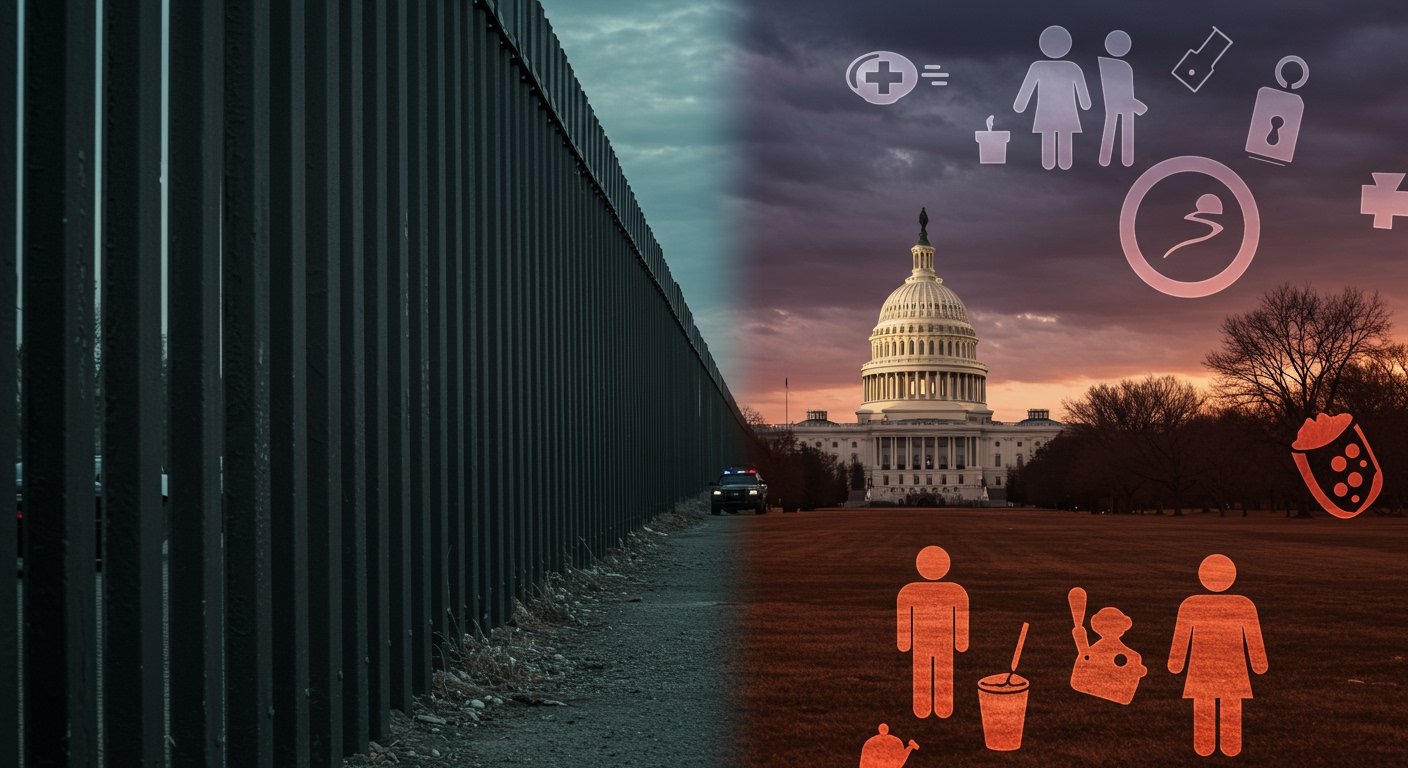Washington, D.C. — The United States House of Representatives has granted its definitive approval to a far-reaching spending bill championed by President Donald Trump, clearing the path for the legislation to be sent directly to the President for his signature. The bill, referred to by proponents as the “One Big Beautiful Bill,” encapsulates a complex mosaic of fiscal measures, ranging from substantial allocations for border security to broad tax reductions and significant alterations to federal aid programs.
Passage through the House marks a critical legislative milestone, bringing the comprehensive package one step closer to becoming law and enacting profound changes across various sectors of the U.S. economy and social safety net.
Focus on Border Security Funding
A central component of the approved legislation is the provision of approximately $13.5 billion specifically designated to reimburse states situated along the nation’s borders for expenditures they have already incurred on security efforts. This funding aims to offset costs borne by states like Texas, which has been a key player in border security initiatives, allowing them to recoup funds used for personnel, infrastructure, and technology deployment.
The inclusion of this significant sum underscores the administration’s focus on border security as a national priority and reflects a response to calls from states seeking federal financial assistance to manage the costs associated with securing the southern border. The allocated funds are intended to acknowledge and compensate for the financial strain placed on these states by ongoing efforts to enhance border control and surveillance.
sweeping Fiscal Measures
Beyond border security, the bill introduces a series of sweeping fiscal measures poised to reshape the economic landscape. Among the most significant is the inclusion of roughly $4 trillion in tax cuts. These reductions are intended to stimulate economic growth and provide financial relief, which supporters argue will benefit individuals and businesses alike.
Conversely, the legislation also mandates substantial slashes to crucial federal aid programs, specifically targeting Medicaid and SNAP (Supplemental Nutrition Assistance Program). These programs provide healthcare and food assistance, respectively, to millions of low-income Americans. The proposed cuts, coupled with the introduction of new work requirements for beneficiaries, represent a fundamental shift in eligibility criteria and the scope of federal support for vulnerable populations.
The implementation of stricter work requirements necessitates that recipients of these programs meet specific employment or job training thresholds to maintain their benefits, a policy change that proponents argue will encourage self-sufficiency but which critics contend could lead to increased hardship.
Projected Impacts and Divisions
The potential consequences of these fiscal changes have drawn sharp criticism and generated significant debate. The Congressional Budget Office (CBO), a non-partisan entity providing fiscal and budgetary analysis to Congress, has released estimates projecting that the cuts to programs like Medicaid could result in as many as 11.8 million Americans losing health insurance coverage. This projection has become a flashpoint in the debate, highlighting concerns about access to healthcare, particularly for low-income families and individuals.
Democrats have voiced strong opposition to the bill, arguing that its provisions disproportionately harm vulnerable populations. Congressman Lloyd Dogget, who represents a district that includes parts of Austin, Texas, has been a vocal critic, asserting that the bill will negatively impact low-income families and potentially undermine the financial stability of rural healthcare providers. The argument is that cuts to Medicaid could reduce the reimbursement rates or eligibility of patients in rural areas, placing financial strain on healthcare facilities that serve these communities.
Critics also argue that the combination of massive tax cuts benefiting corporations and wealthy individuals alongside cuts to essential safety net programs exacerbates income inequality and fails to address the needs of everyday Americans.
Support from Republican Ranks
In stark contrast, Republican members of the House have lauded the bill as a necessary and beneficial piece of legislation. Supporters, such as Congressman Michael McCall, have championed the bill for what they describe as its positive impacts on the nation.
Republican proponents argue that the tax reductions will stimulate job creation and benefit hardworking families by increasing disposable income. They also contend that the bill strengthens the Department of Defense, ensuring national security readiness, although specific defense spending details were not elaborated upon in the provided summary relative to the total package.
A key selling point for Republicans is the provision that makes significant tax reductions permanent, offering long-term predictability for businesses and taxpayers, which they argue is crucial for sustained economic growth and investment.
The Path to the Presidency
The successful passage of the “One Big Beautiful Bill” through the House of Representatives marks the culmination of intense legislative effort and debate within the lower chamber. Having cleared this significant hurdle, the legislation now proceeds to the Oval Office, where it awaits review and potential signature by President Trump.
Should the President sign the bill into law, it would trigger the implementation of its wide-ranging provisions, from the reimbursement of border states like Texas for security costs to the enactment of trillions in tax cuts and the restructuring of key social safety net programs. The bill’s journey reflects the current administration’s priorities and sets the stage for potentially dramatic shifts in federal spending, taxation, and social policy.






